Related Tags
How to play chords like Neil Young (Part 1)
Master the shapes and patterns that have made Young one of the world’s most beloved and imitated songwriters.
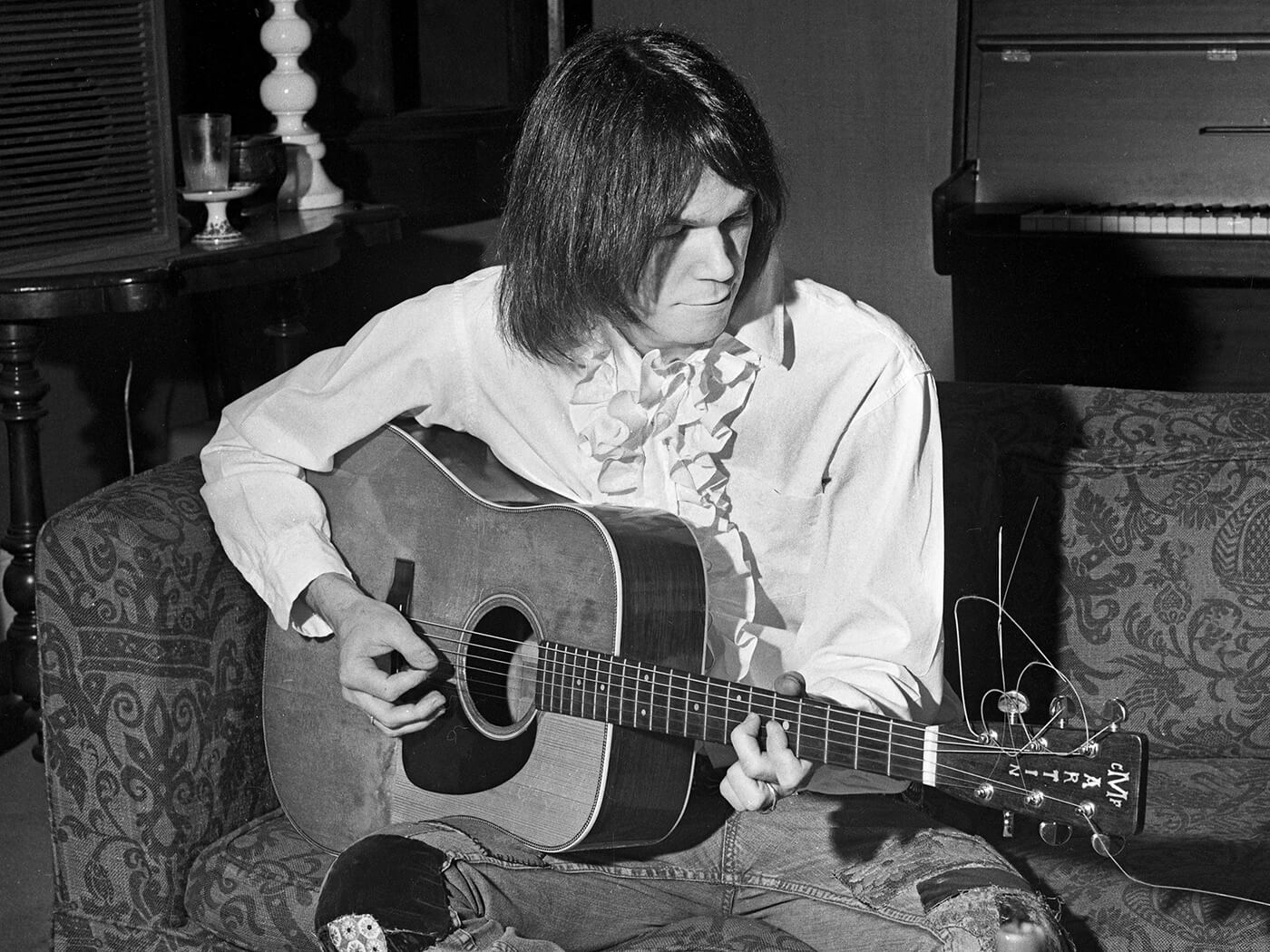
Image: Dick Barnatt / Redferns / Getty Images
Neil Young was present at the birth of folk rock in the 60s with Buffalo Springfield, but on turning solo, his music went on to include elements of country, rockabilly, blues, rock and raucous grunge-like guitar. With his 39th solo album released in 2019, his vast back catalogue is a fascinating source of innovative and original guitar playing.
- READ MORE: How to play chords like Neil Young (Part 2)
Equipped with a high tenor voice and a determination to follow wherever his musical muse leads, Young uses chords in many creative ways – sometimes switching back and forth between two chords to develop a riff effect, or subtly removing a finger to sound an open string. He will also often use slash chords or add an extra note to make a voicing more interesting.
Figure 1
The chords in this example could be played in the style of a two-bar riff. Switch back and forth between the C and D chords in bar one, and then echo that rhythm with the F5 and G5 chords in bar two. While a lot of Young’s progressions have a country tinge, this feels like it would work better as Crazy Horse-era rocker, so try it on your electric with some edgy tweed overdrive.
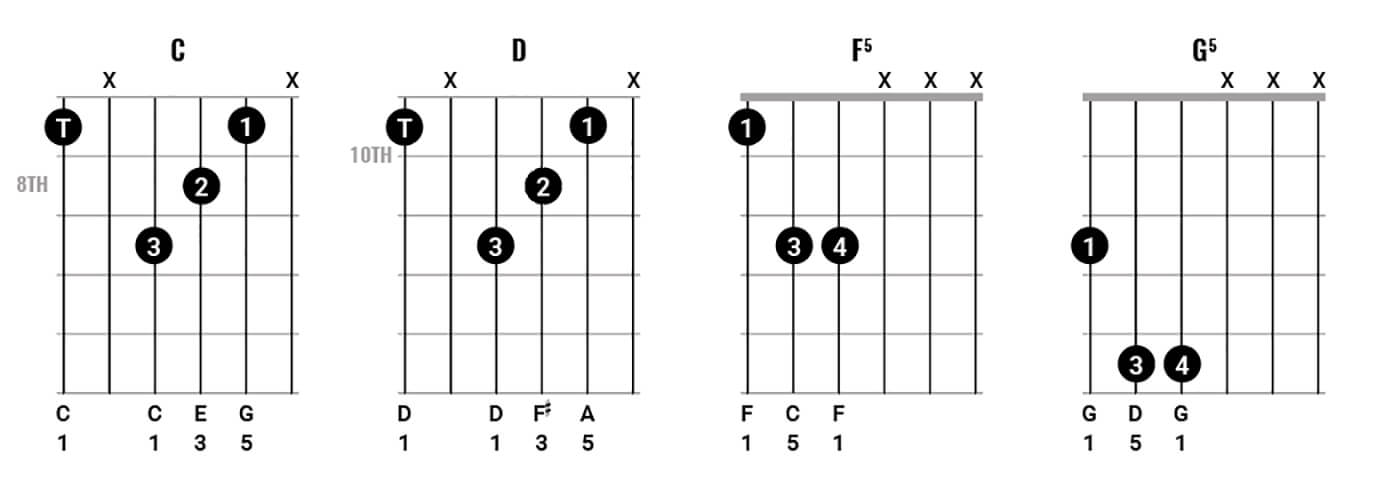
Figure 2
Try playing these chords as a four-bar sequence, in which finger one is removed and replaced in the A minor chord to alternate between A minor and Asus2, adding a cool melodic touch. It’ll sound great on acoustic with steady, grooving strumming pattern, but it will work just as well doubled on a clean electric with the chords arpeggiated. Tidy strumming and fingering will be needed to avoid sounding any unwanted open strings, particularly in the G/B slash chord, where fingers two and four mute the outer two strings.
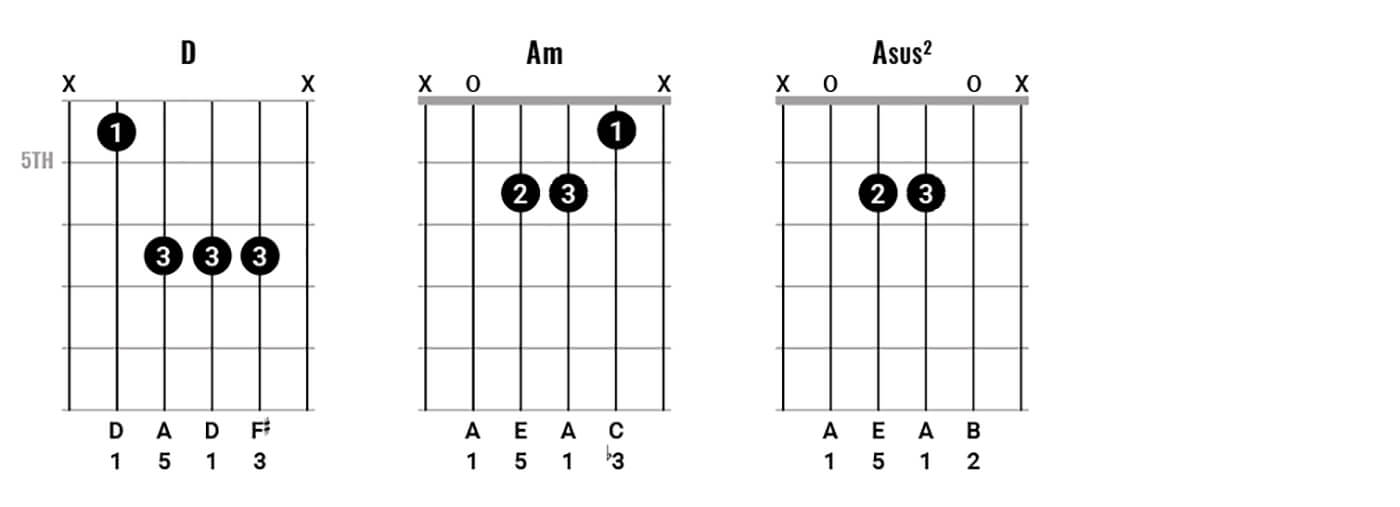
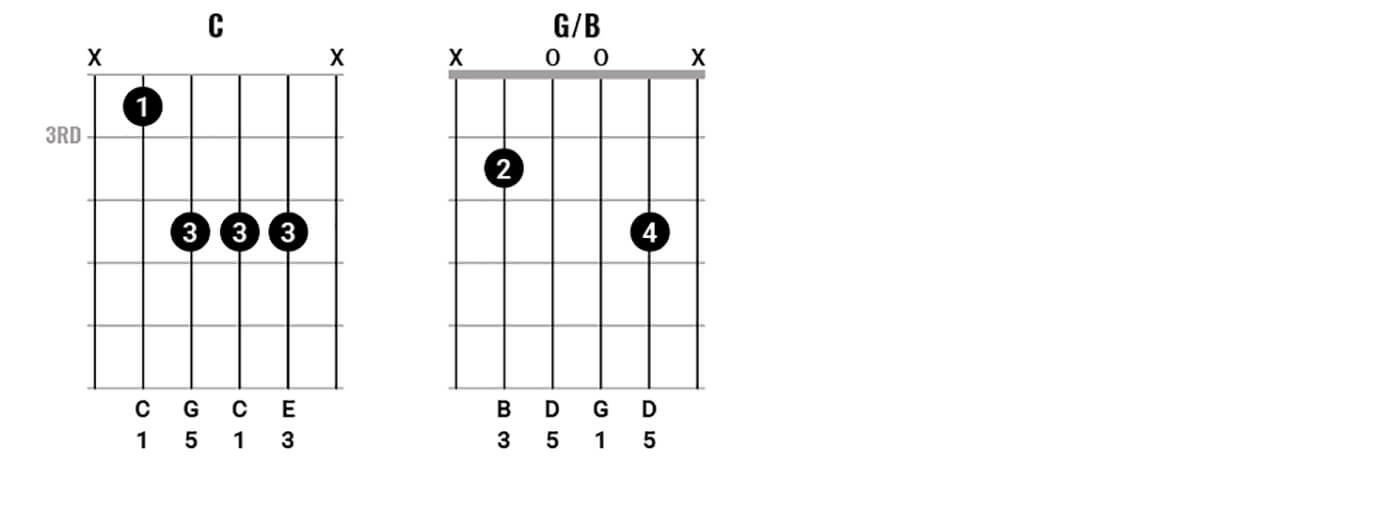
Figure 3
This simple progression could be given a bit of extra interest by using the open strings. In a slow tempo, try strumming while switching between C and Cmaj9, releasing and replacing fingers one and two but holding finger three, and then into the G. You can mute the low E string on the C chords either with the tip of your third finger or by allowing your thumb to come up over the top of the neck.
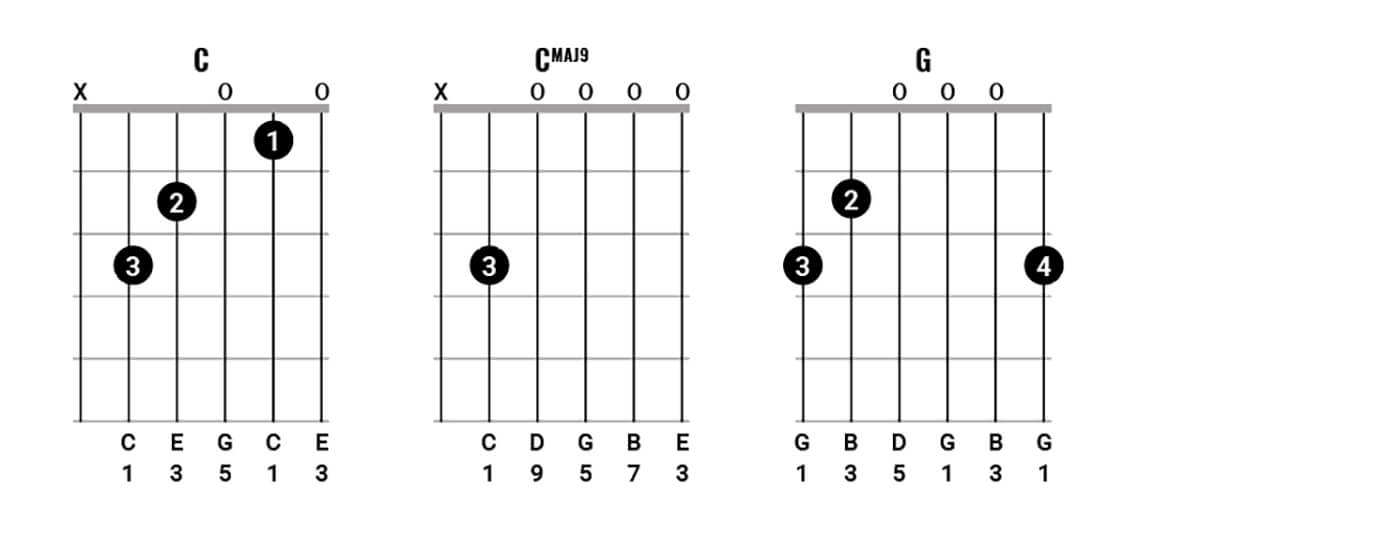
Figure 4
Young is not averse to strumming some big fat barre chords, or to using some unusual keys. With the Bminor add11 the idea is to hammer-on with the first finger at the second fret on the top string about halfway through the bar, moving on to E in the second bar. Repeat this, and then play C♯m and F♯ before heading back to Bm and E, making eight bars in all. This example is inspired by an intro which leads to a verse based around A, Bm, E and A again.

Figure 5
In this example you need to separate out the bassline and then strum the upper notes of the chord. This should give you the classic “root and fifth” bass line often heard in country music. The interest comes from releasing the second finger on the D chord when you pick the A bass note, this being another example of adding interest to a chord sequence by tactically releasing one or more fingers. For the G major chord the optional bassline would alternate between the low G on the E string and the open D string.
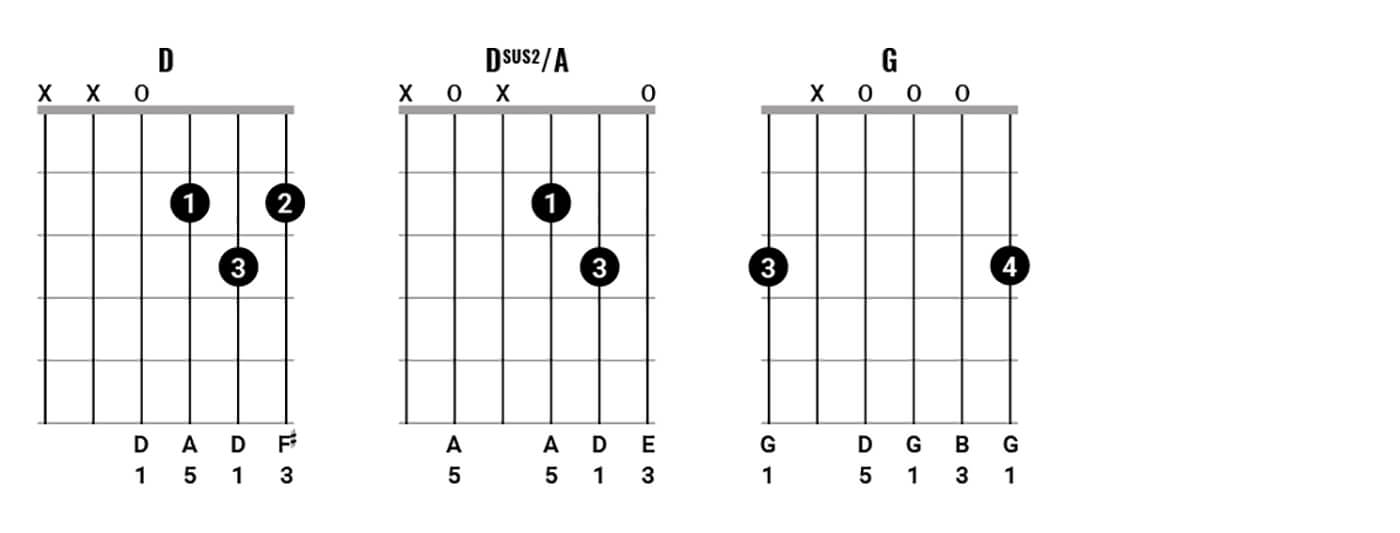
Figure 6
Our final example could work as a two-bar idea and would sound even better with a hammer-on from the open G string to the second fret with finger two, converting the Fsus2 chord to F major. Follow this up with a bar of G and Em7. We are back to thinking rock rather than country here, so add a touch of drive to your tone and go for a medium tempo.
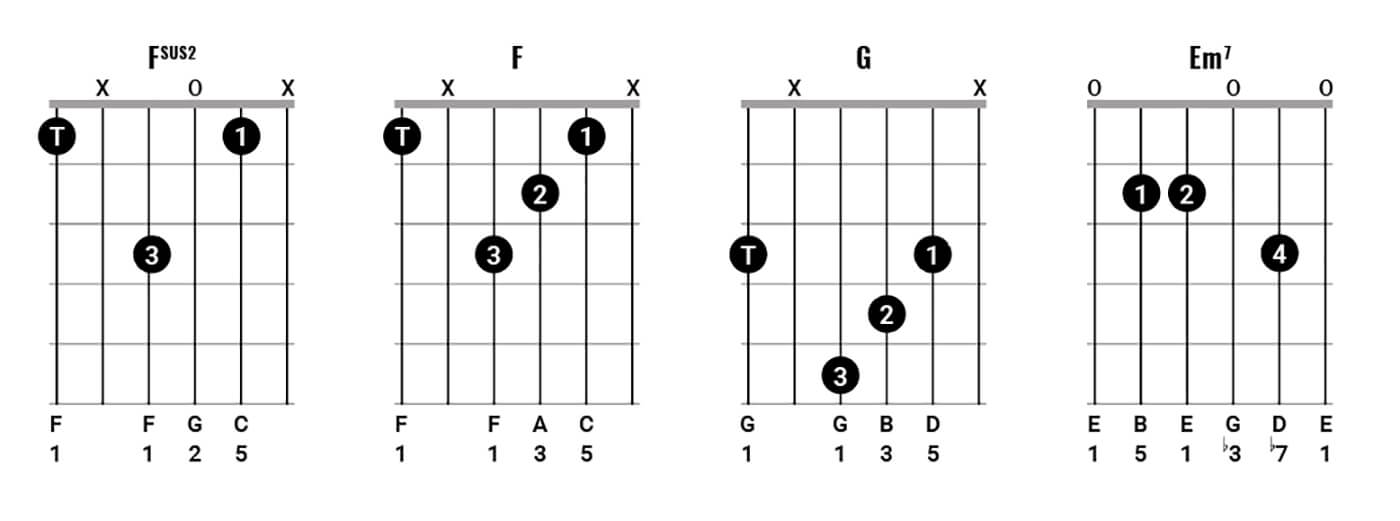
More lessons from your favourite guitar players here.
